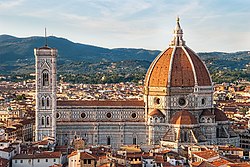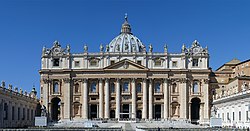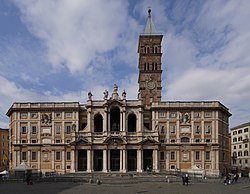Cathedral

A cathedral is a Christian church that is the office of a Bishop or Archbishop. As cathedrals serving as the office, they are central church of a diocese or archdiocese. Only those Christian denominations have cathedrals. Cathedrals can be found in the Roman Catholic, Eastern Orthodox, Oriental Orthodox, Anglican as well as some Lutheran churches.
In the Greek Orthodox Church, the terms "kathedrikos naos" (literally: "cathedral shrine") and "metropolis" (literally "mother city") are both used to describe the same thing. "Metropolis" is more common, but both terms are officially used.
There are variations on the use of the term "cathedral"; for example, some pre-Reformation cathedrals in Scotland now within the Church of Scotland still retain the term cathedral, despite the Church's Presbyterian polity which does not have bishops. As cathedrals are often particularly impressive buildings, the term is often used incorrectly to refer to any large important church. Some churches are bigger than the cathedral.
Several cathedrals in Europe, such as Cologne, and in England at York, Norwich and Southwell, are referred to as Minster (German: Münster) churches, from Latin monasterium, because the establishments were served by canons living in community or may have been an abbey, prior to the Reformation. The other kind of great church in Western Europe is the abbey.
Definition
The word cathedral is derived from the Latin noun "cathedra" (seat or chair), and refers to the presence of the bishop's or archbishop's chair or throne serving as his office. In the ancient world, the chair was the symbol of a teacher and thus of his role as teacher, and also of an official presiding as a magistrate and thus of the role in governing a diocese or archdiocese.
The word cathedral, though now grammatically used as a noun, is originally the adjective in the phrase "cathedral church", from the Latin "ecclesia cathedralis". The seat marks the place set aside in the prominent church for the head and is therefore a major symbol of office.[1]
Many cathedrals are very old.
Cathedrals which are not the seat of a bishop
Some churches are called cathedral, but they are not the office of a bishop or archbishop. This may be because the way the church is organised changed over time. This is the case for Our Lady of Sorrows Church, Poprad, in Slovakia, for example. In Slovak language, this church is called cathedral. It is part of the Roman Catholic Diocese of Spiš. This diocese was re-organised several times. Currently, the cathedral of the diocese is St. Martin's Cathedral (Spišská Kapitula). Churches that formerly were a diocesan seat may be called concathedral, co-cathedral, or pro-cathedral.
Cathedral Media
The Santa Maria del Fiore Cathedral in Florence in Italy. Its dome by Filippo Brunelleschi, the largest brick dome in the world, is considered a masterpiece of world architecture.
The cathedra of the Pope as Bishop of Rome, Archbasilica of Saint John Lateran
Etchmiadzin cathedral in Vagarshapat, Armenia, believed to be the oldest cathedral in the world.
The Cathedral of Santa Maria Assunta is a Catholic cathedral in Nepi, Italy
The Cathedral of Brasilia in Brazil takes a modernist form
St Paul's Cathedral is a landmark of London
Despite its size and historic importance, St. Peter's Basilica in Rome, the Holy See of the Catholic Church, is not a cathedral.
The Patriarchal Archbasilica of Saint John Lateran, Rome.
The Basilica of Saint Mary Major, Rome
The Palais de la Berbie, an episcopal palace in Albi, France
References
- ↑ New Standard Encyclopedia, 1992 by Standard Educational Corporation, Chicago, Illinois; page C-172/3
Gallery
The Archbasilica of St. John Lateran in Rome is the office of the Pope as Bishop of Rome.
Cathedral of Saints Peter and Paul, Douala, Cameroon
The Cathedral of Córdoba, Spain includes Moorish architecture.
Cathedral of Cologne, Germany. It is a UNESCO World Heritage site and one of the most famous churches in Germany.
Cathedral of Speyer, the biggest romanesque Church in the world that still stands. The abbey of Cluny was bigger but was destroyed.
| Wikimedia Commons has media related to Lua error in Module:Commons_link at line 62: attempt to index field 'wikibase' (a nil value).. |










